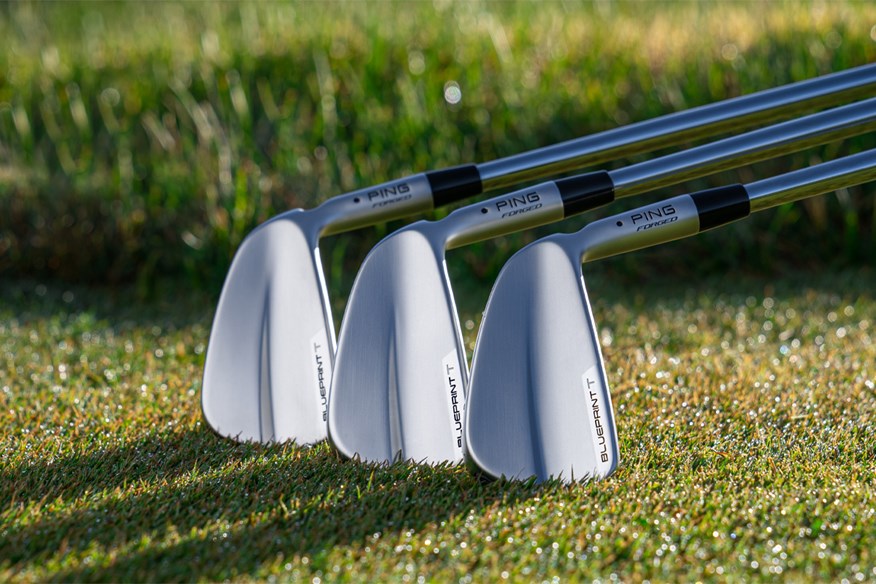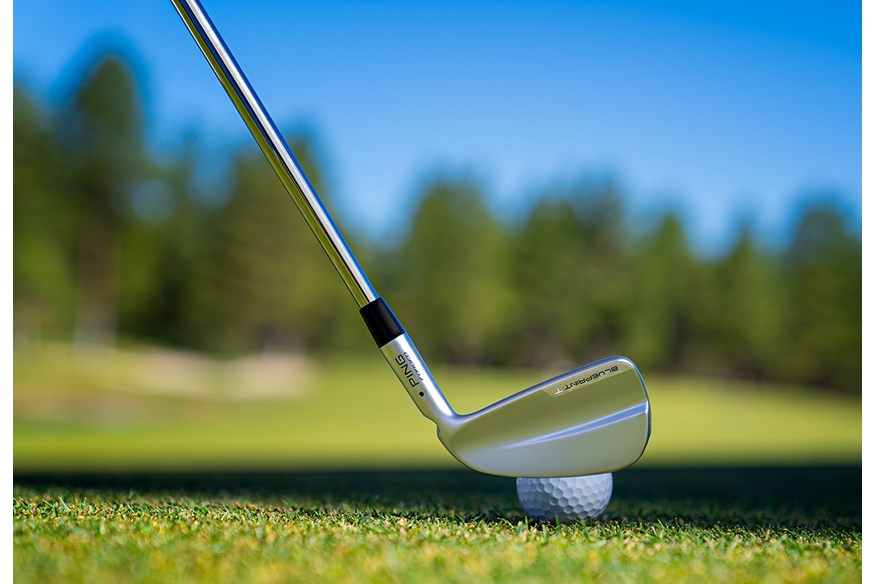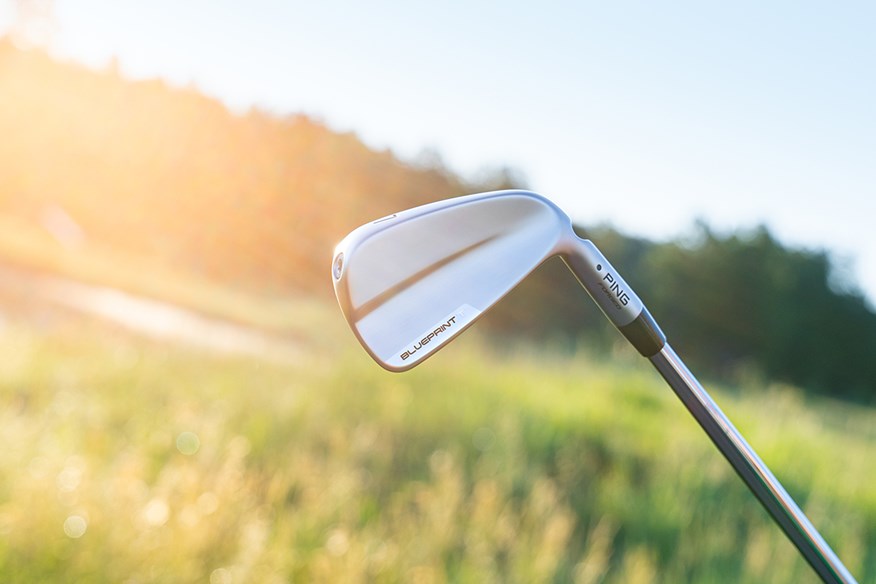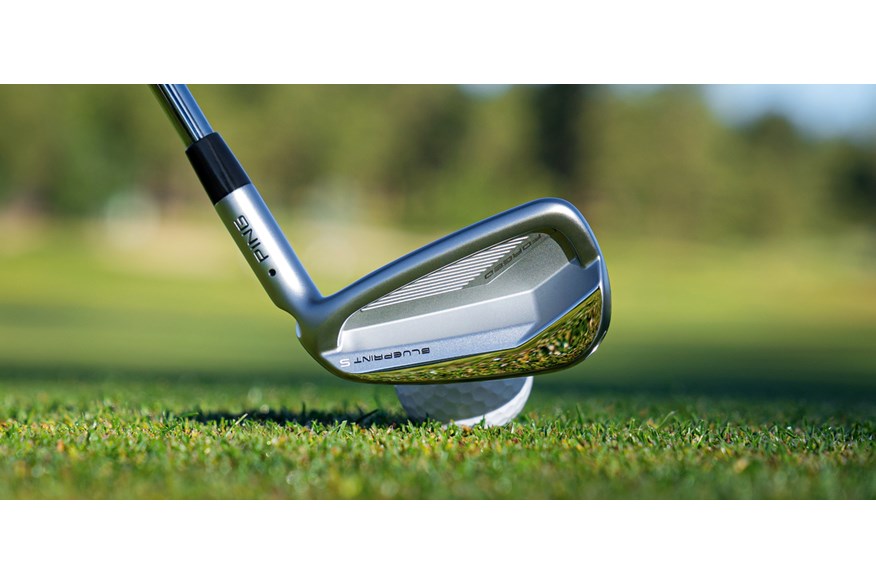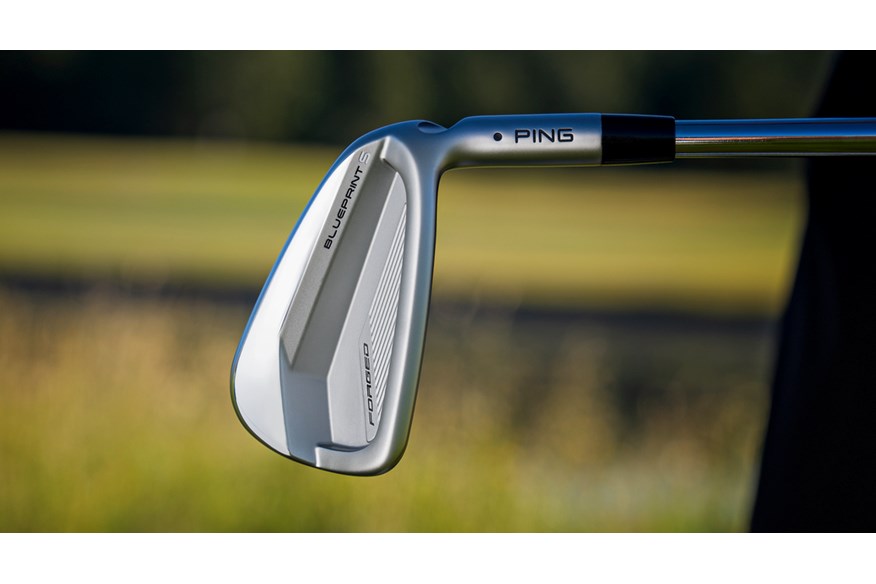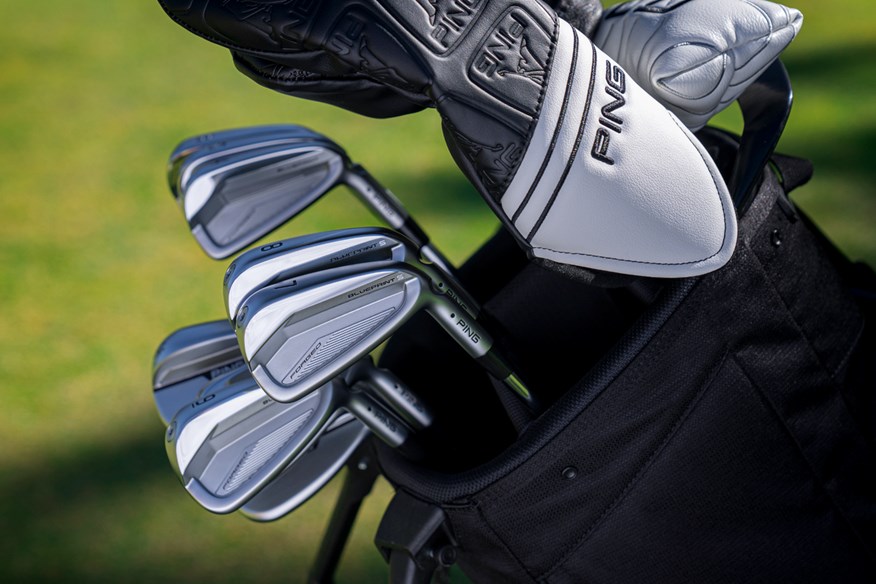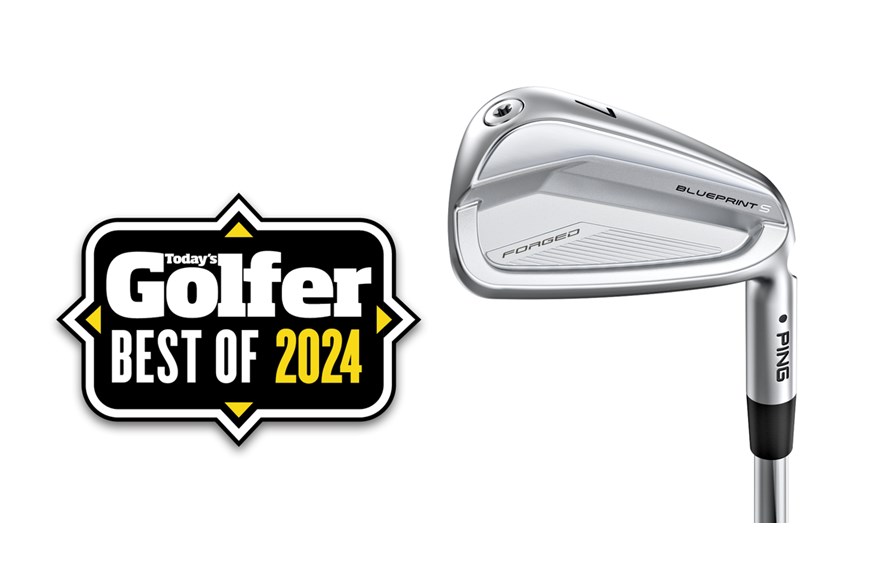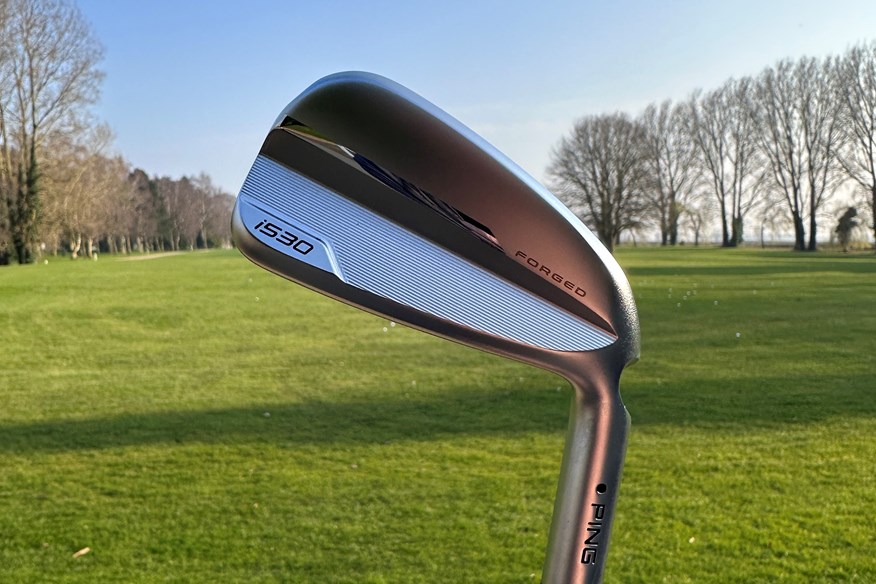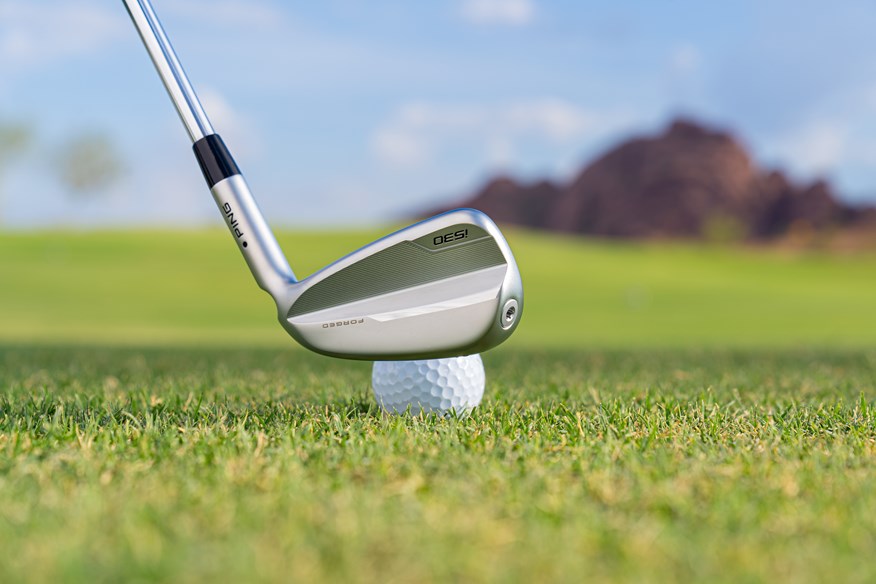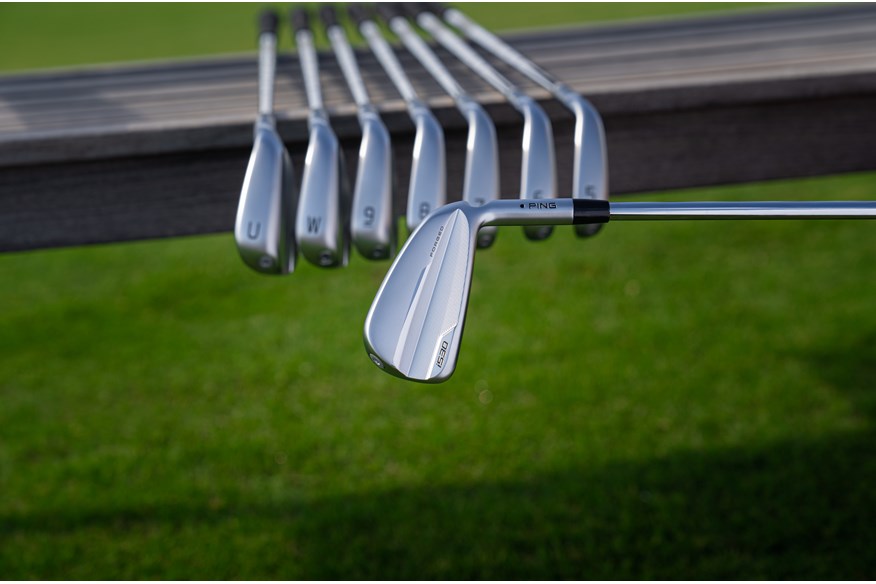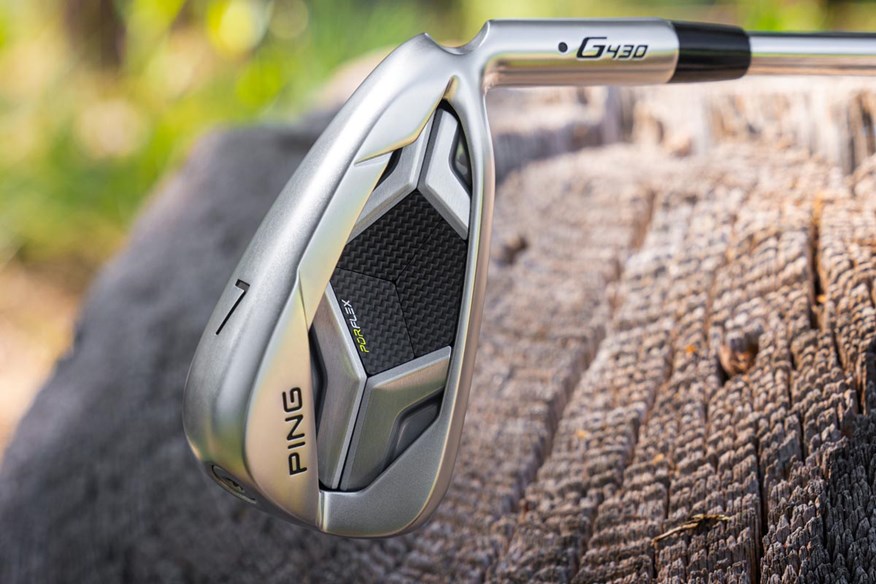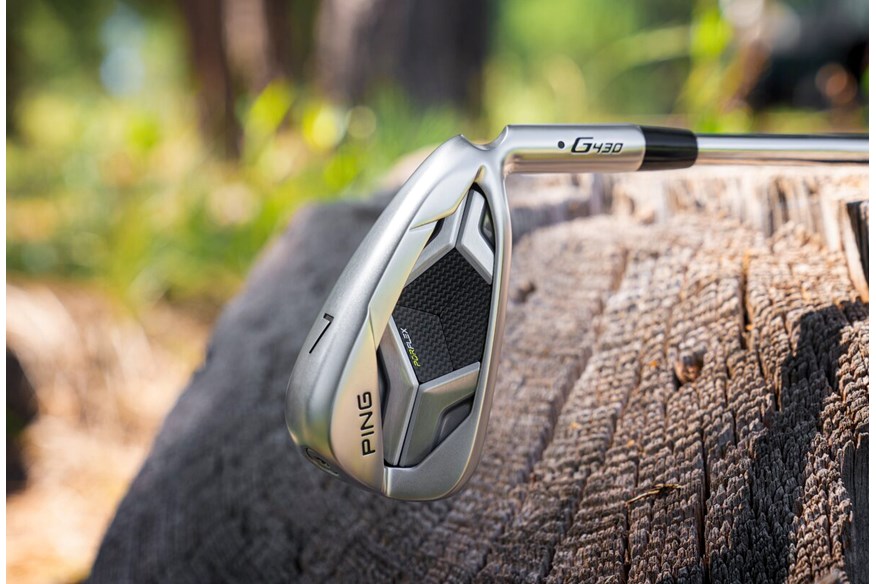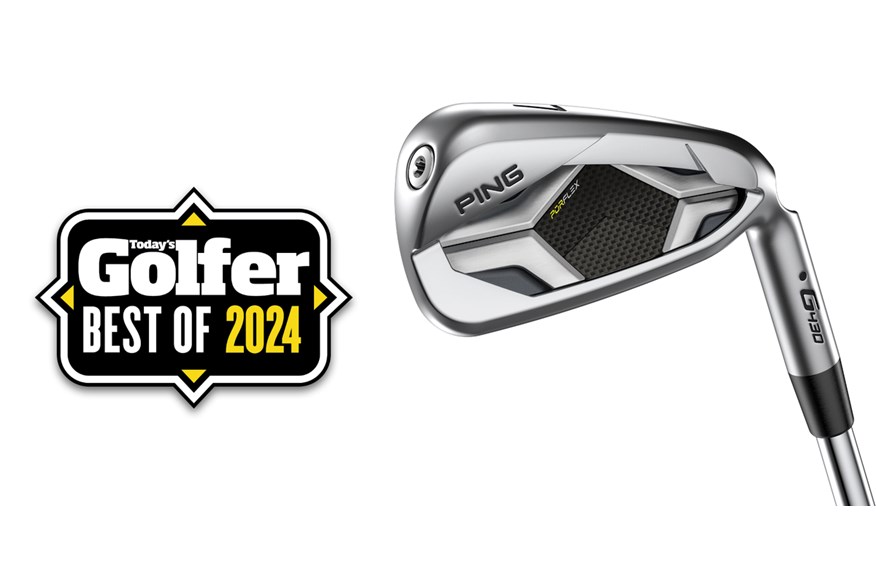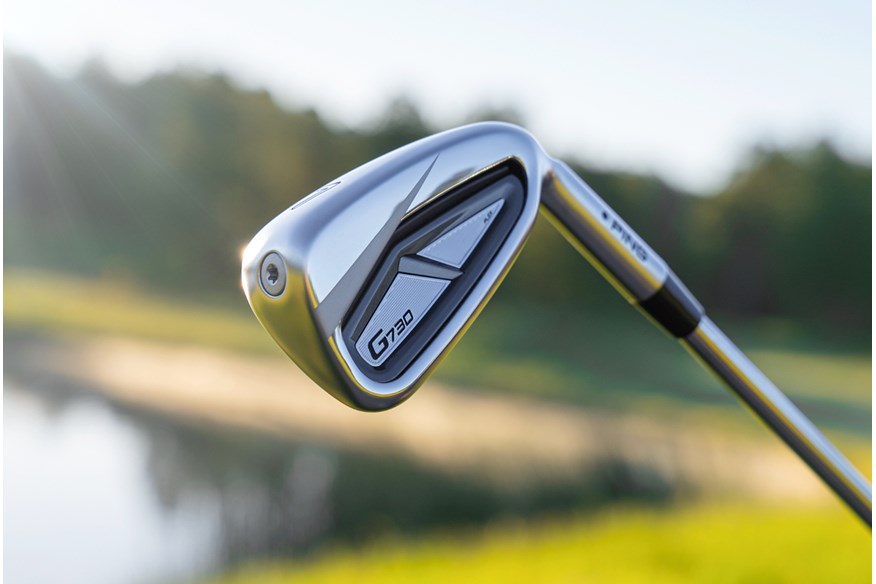Discover Ping’s Best Irons in 2025 for All Playing Levels: Tested and Reviewed by Professionals
Last updated:
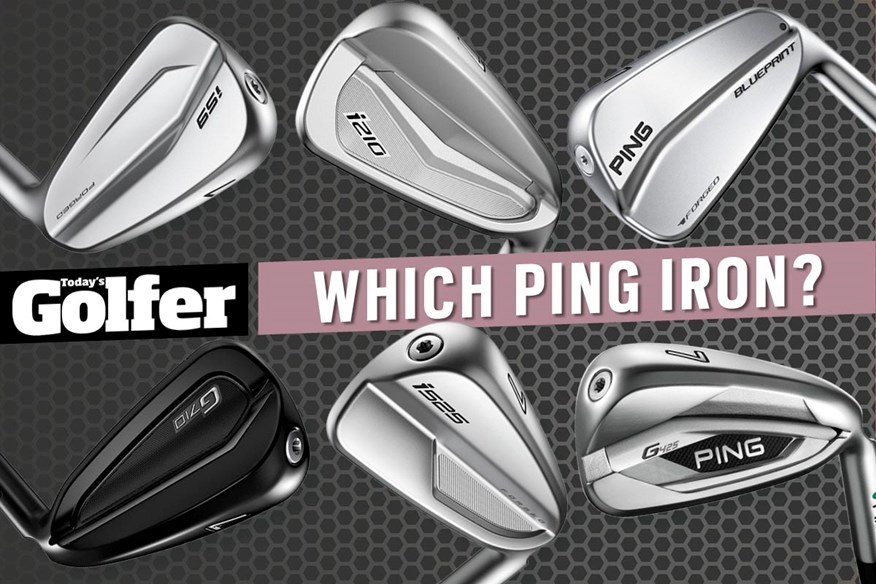
Which Ping iron is best for your game? Here’s a complete guide to each iron in Ping’s 2025 line-up, who they are aimed at, and how they performed when tested by our pro.
Ping’s line-up is often a fraction smaller than many of the other biggest brands, but they consistently produce some of the best golf irons and are always very popular among mid- and high-handicappers. That’s not to say they don’t cater for better players, too, there are plenty of elite golfers and tour pros who swear Ping irons are the best fit for their game.
Many Ping iron models have a decent lifespan, particularly compared to some other brands who replace or update models every year. All Ping irons stay in the market for at least two years yet some stick around for many years, which is virtually unheard of in the golf industry these days. That doesn’t mean they’re outdated, simply that Ping won’t replace a model until they truly believe its successor offers a decent improvement.
Whether you’re an aspiring tour pro or a beginner golfer, there’s a Ping iron out there for you. Here’s my rundown of how to choose the best Ping irons for your game.
Best Ping Irons – Jump to:
What type of iron do you need?
Irons come in an array of styles and are generally broken down into categories, each different style suits a distinct capability of golfer, so you must pick the right category of iron to suit you. The categories you’re most likely to come across are blades/muscleback, players’ irons, players’ distance irons, mid-handicap/game improver irons, and high handicap or super game improver models. Here’s how to decide which best suits you.
Blades/Musclebacks
Blade golf clubs have smaller heads with narrower toplines and soles, they’re designed to offer great looks, feel, and control. Blades typically have less hosel offset so the center of gravity is not as far back, so even though most blades have more loft (as the better players who use them don’t crave more distance) they don’t necessarily flight shots shots higher.
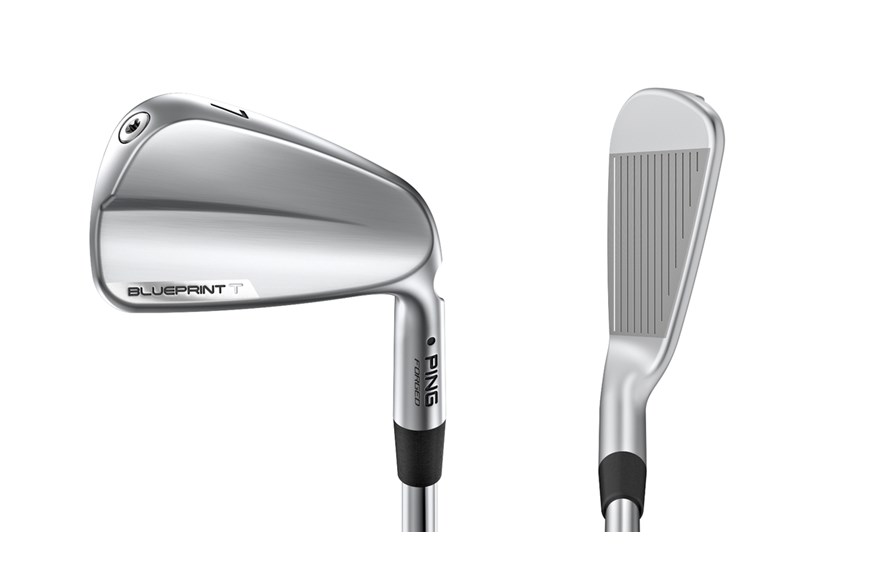
Blades will typically have weaker, traditional lofts (34° or even 35° for a 7-iron) and produce higher spin but less distance than other types of iron. Thanks to the smaller head and more forward CG (center of gravity) the best blades are always the least forgiving irons you can buy. Ping produces one muscleback blade the Blueprint T.
Players’ Irons
Players’ irons are typically aimed at low handicappers, elite golfers, and many tour pros choose models from this category. Expect similar characteristics to blades (small heads, weak lofts, nice looks) but with a shallow cavity back or modern hollow body with a fraction more technology packed in to add just a touch of forgiveness.
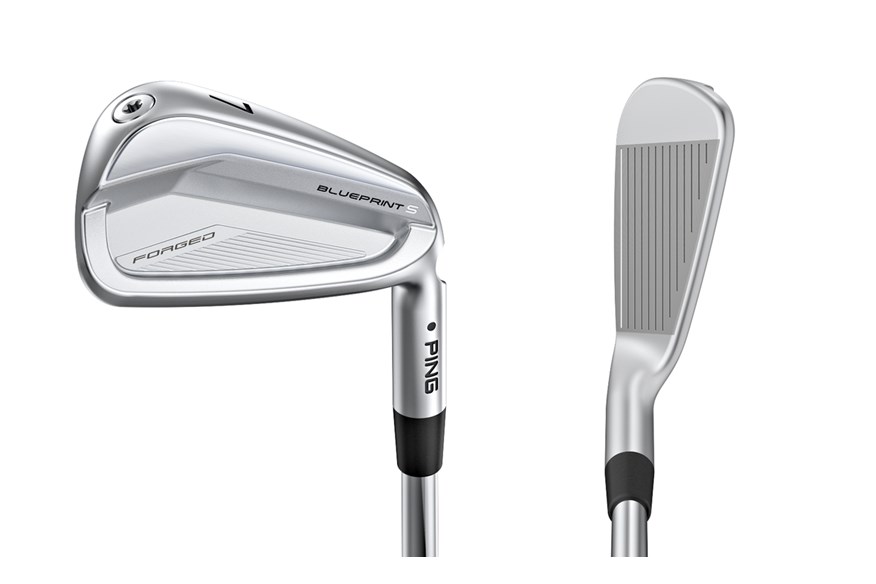
Golfers should not be buying in this category if they need to keep an eye on distance, if you do then players’ distance irons should be the category you shop within. If you strike your irons consistently well and don’t need much help with distance or forgiveness, the best players’ irons could be for you. Make no mistake, though, there are far more forgiving and distance-boosting irons available.
Ping produces two players’ irons the forged Blueprint S and cast i230.
Players’ Distance Irons
Callaway effectively started what is today a hugely popular Players’ Distance Iron category back in 2014 when they unveiled their first Apex model that teamed a forged head, with cavity back performance and a stronger loft. Decent club golfers fell head over heels in love with the idea, and today the category has evolved to include lots of hollow body, thin/fast face constructions.
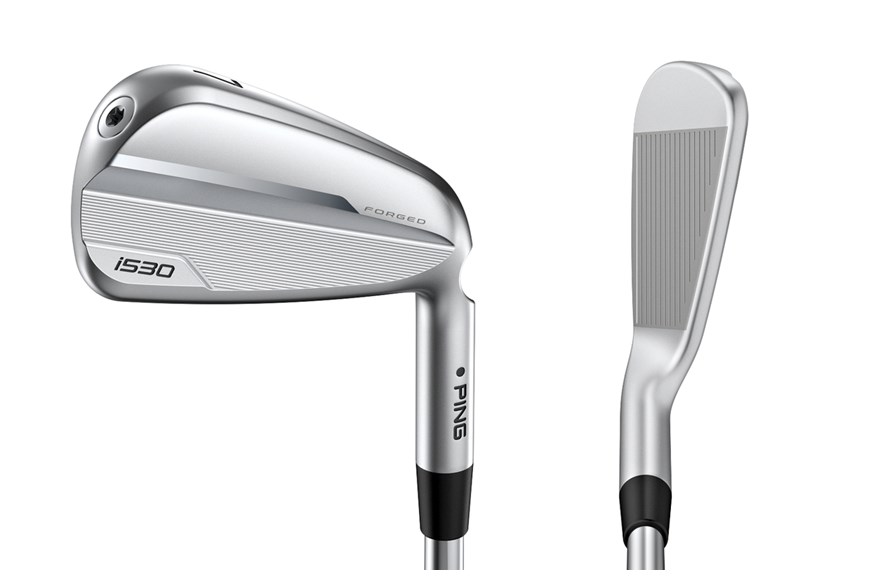
The category is spearheaded by the popular TaylorMade P790. Players’ distance irons pack a lot of distance and forgiveness potential into head shapes that look great. Expect stronger lofts than players’ irons and typically you won’t want to be playing off much more than a 12 -14 handicap to think about playing models in this category.
The best players’ distance irons will typically create more speed and distance than blades and players’ models, and while they may not generate quite as much spin, their high launch helps shots hold greens. Ping makes one Players’ Distance Iron the i530.
Mid-Handicap/Game Improver Irons
Without question, the mid-handicap iron category is the biggest and consequently most lucrative in the game as this is the area most golfer’s games sit within. Game Improver Irons will never be quite as sleek as players’ or players’ distance models but they are hugely versatile and offer great distance and forgiveness potential.
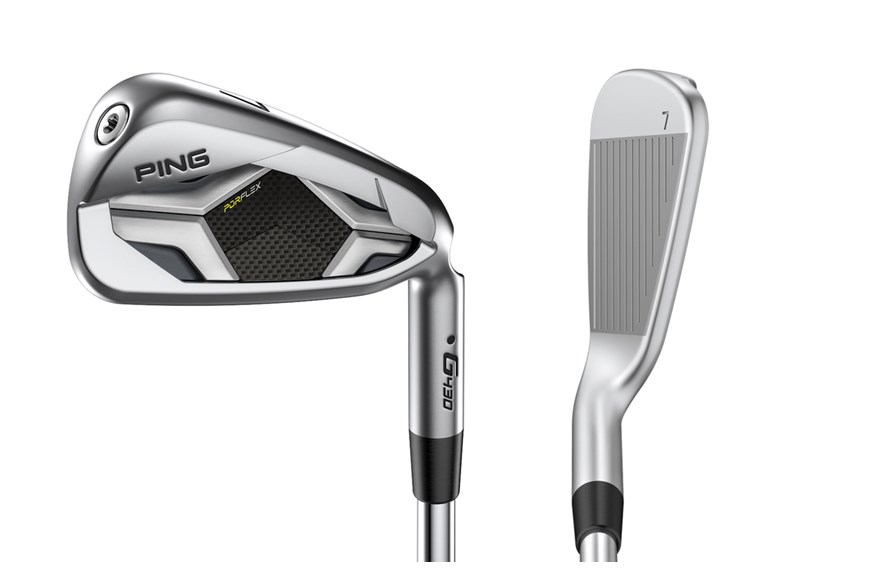
Most golfers will notice how cavity-back game improver irons don’t sound or feel quite as nice as a one-piece forged blade or players’ iron but the attraction here is when shots are sprayed across the face of the iron golfers can still expect to see reasonable results.
Mid-handicap irons usually fall into the hands of golfers with a handicap of 8 or above, they’re good for golfers who value extra forgiveness over looks, the Ping G430 sits within this category.
High-Handicap/Moderate Swing Speed Irons
These irons tend to be the most forgiving, with their bigger, chunky heads being packed with technology to make it as easy as possible for golfers of all abilities to get the ball airborne and heading in the right direction. They won’t win any awards purely on looks or feel, but if you struggle to hit irons well, the best high-handicap irons could help you.
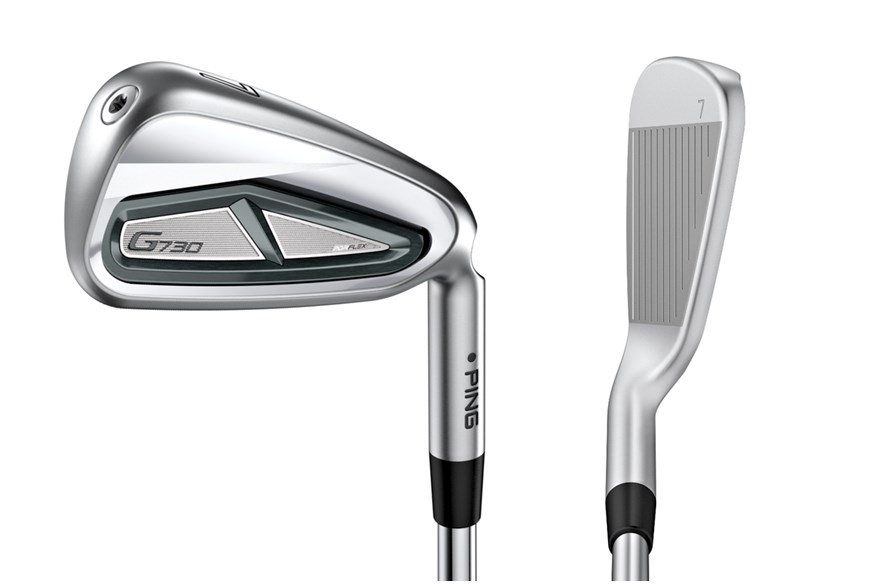
In today’s market also look out for higher lofted High Launch irons which are trending up. These models are designed for more average-speed players to help flight shots for optimal spin, height, descent angle and carry distance. Ping’s G430 HL iron is also lighter to boost club speed.
Should you choose forged or cast irons?
At some point in their construction, both forged and cast irons were made of molten metal. Forged irons come from billets of steel stamped under massive force into a clubhead shape in several stages which compresses and aligns the grain for a claimed greater feel.
Cast heads are created by molten steel poured into molds. Casting technology has moved on massively and it’s said heat treatment after casting combined with the type of steel used today means a cast head can feel very much like a forged one, so if you’re unsure if you can feel the difference don’t think forged irons are better quality.
What does hosel offset do?
Larger amounts of offset are usually found in game improver and high-handicap iron models. By setting the face behind the hosel there’s a little more time to square the face at impact and the center of gravity is positioned further back so it’s easier to flight shots, particularly at slightly lower speeds.
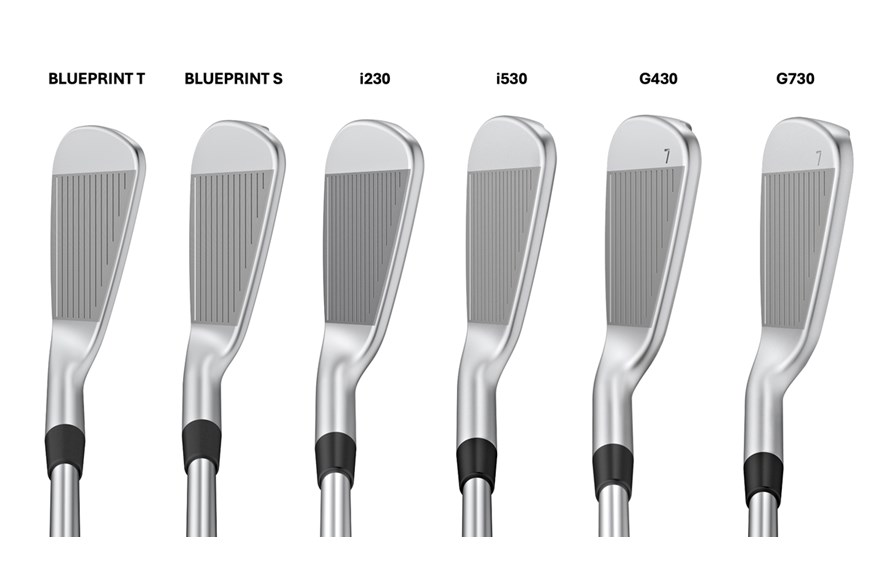
Better player irons generally have less offset so the leading edge is much more in line with the hosel. This makes the club a little easier to ‘shape’, as the center of gravity is further forward, hence why shot shapers often love forged irons.
Best Ping irons at a glance:
Best muscleback blade: Ping Blueprint T – View Offer
Best tour/players’ iron: Ping Blueprint S – View Offer
Best players’ distance iron: Ping i530 – View Offer
Best for forgiveness, distance, and looks: Ping G430 – View Offer
Best for forgiveness: Ping G730 – View Offer
Best Ping Irons 2025
The T is a second-generation Ping Blueprint iron, which has to say the brand's switch to forged constructions for very elite player irons is working. If the marquee hadn’t hit the spot things just wouldn’t have progressed past the original.
Until now Ping and forging have been really uneasy bedfellows as before Blueprint the brand's forged iron repertoire ran to just two Anser models (in 2010 and 2012) since the 1960’s. Forged irons usually win over 90% of tour events, yet less than 10% of pros believe the best blades like the Blueprint T are the best choice for their game, which has to say this model has a very limited audience.
In my book the T comes with a brilliant head shape and profile, yes the sole width is incredibly narrow but I completely understand why the eyes of decent golfers would be drawn to this super elegant beauty. Thanks to having the same 7-iron loft as the brilliant Blueprint S our test data has the pair down as being pretty evenly matched on a spreadsheet, but thanks to its cavity back construction the S will provide some additional ball speed protection when shots are hit away from center face.
I wouldn’t be doing my job if I didn’t recommend anyone drawn to this model should also hit the Blueprint S, as my gut feeling is 95% of golfers will get better results from the slightly more forgiving players’ model.
Read our full Ping Blueprint T iron review.
TG Test Pro Data:
Ball Speed: 119.3 MPH / Launch Angle: 16.3° / Backspin: 7323 RPM / Peak Height: 31 YDS / Descent Angle: 46.4° / Carry Distance: 165 YDS
Pros
- A few will love the turf interaction of the super-slim soles
- The lovely forged feel
- The model is a timeless classic
Cons
- Very unforgiving
- Expect short carry distances
| Category: | Muscleback blade |
| Handicap range: | Four and below |
| Construction: | Forged from a single piece of 8620 carbon steel |
| 7-Iron loft: | 33º |
Ping doesn’t have a huge back catalog of forged iron models, so from what I’ve seen of the Blueprint S I can confidently say it’s the best the brand has ever made. Yes, the players’ iron category is crammed with excellent models, but our test pro’s disappointment was obvious when he realized Ping revealed this model in the very year he decided to start playing Callaway equipment. Which in my book alone says everything you need to know about how good this beautiful model is.
It's really important to not get dragged into thinking the Blueprint S is Ping’s forged cavity back model for club golfers, it really isn’t.
A 33° 7-iron loft and low-launching True Temper Dynamic Gold 120 stock shafts should spell that out loud and clear, as both help position this model very much as one of the best players irons of 2024.
The big question I see decent players encountering this year is the choice between the Blueprint S and the Ping i230, both of which target the players’ iron arena.
Our data has the Blueprint a few yards out in front for carry distance, a number which could easily be reversed on another day’s testing. My gut feeling is decisions will ultimately come down to how much premium you put on playing forged irons, and how sensitive you are to price, as the S will set you back £140 more for a seven-piece set.
After testing both models I believe you can’t make a bad choice, but the Blueprint S does feel like it will have more timeless classic appeal should you want to invest in a model that’s going to hold its value.
Read our full Ping Blueprint S iron review.
TG Test Pro Data:
Ball Speed: 120.4 MPH / Launch Angle: 15.6° / Backspin: 7105 RPM / Peak Height: 30 YDS / Descent Angle: 45.7° / Carry Distance: 167 YDS
Pros
- Beautiful looks and feel
- The MOI is slightly higher in the long irons
- The faces are CNC Milled for precision
Cons
- £1400 is a lot for a set (7-piece) of Ping irons
| Category: | Players’ Iron |
| Handicap range: | Eight and below |
| Construction: | Forged from a single piece of 8620 carbon steel |
| 7-Iron loft: | 33º |
The i530 is brand new having literally just been revealed in March, which means we’ve not yet had the chance to collect comparative data for the model against the rest of the Ping 2025 iron line-up.
The new model replaces the previous i525 and thanks to its 17-4 stainless steel hollow body and flexible maraging C300 face (the same construction used in Ping fairway woods and hybrids) golfers get metal wood-like behavior to boost ball speed and add distance.
The i530 positions itself front and center stage for reasonably consistent golfers who demand a compact head size, thin topline, and narrow sole but also want an extra degree of speed and distance in their iron game. If you’re a regular golfer and your handicap is 12 or less and more distance is high on your agenda the fractionally stronger 7-iron could well add a little more pop to your iron game than some of the competition.
Ping says the i530s have a lower center of gravity and optimized lofts to promote a higher peak height and steeper descent angles which ensure shots hold the green. If you’re torn between this model and the excellent G430, please try both side by side.
Thanks to the extra hosel offset, a wider sole, and more mass being positioned below the center of gravity the G430 should launch and flight shots a fraction higher, which at more average speeds will keep the ball in the air for longer. Launch monitor data will help you understand the best route for your game, be in no doubt the i530 will be one of the best players' distance irons on the market in 2025.
Read our full Ping i530 review.
TG Test Pro Data:
Ball Speed: 125.8 MPH / Launch Angle: 14.5° / Backspin: 6180 RPM / Peak Height: 31 YDS / Descent Angle: 45.1° / Carry Distance: 179 YDS
Pros
- Lots of performance packed into neat-looking heads
- Good speed and distance
- Minimal offset in short irons
Cons
- Only the face is forged from springy C300 managing steel
| Category: | Players’ Distance Iron |
| Handicap range: | 12 and below |
| Construction: | Hollow body with cast 17-4 stainless steel chassis and forged C300 maraging steel face |
| 7-Iron loft: | 29º |
Just like their Eye2 and Zing2 ancestors, the Ping G430 irons are so versatile they can be set up for absolutely anybody, but typically they fall into the hands of mid and higher-handicap golfers.
The G430’s are the best-looking G iron thus far, gone is any hint of the boxy head shape that used to be levied at Ping's older models, with the mid and short irons now being particularly attractive and confidence-boosting, which hasn’t always been the case before.
There are plenty of skeptics out there who say strong loft irons launch shots lower, spin less, and produce a shallower descent angle, but for a second year running our G430 data challenges that sort of thinking.
For our test pro the G430 which is 1.5° stronger in the 7-iron than the i525 (now replaced by the i530), flighted shots higher, and hit the dancefloor at a steeper angle, while also adding 14 yards of carry distance which shows the magic tricks some modern strong loft irons bring to the party.
In my opinion, the G430 is a brilliant option for huge numbers of club golfers. I could easily see the model being just as good a fit in the hands of 8 handicappers who want forgiveness as a 25-handicapper who desires shot-to-shot consistency.
Just because it’s entered its second year on the shelf doesn't mean the G430 isn't one of the best mid-handicap irons available in 2025.
Read our full Ping G430 review.
TG Test Pro Data:
Ball Speed: 125.4 MPH / Launch Angle: 15.1° / Backspin: 6574 RPM / Peak Height: 32 YDS / Descent Angle: 46.1° / Carry Distance: 177 YDS
Pros
- Wonderful performance
- Hugely versatile
- Good looks
Cons
- Some better golfers will want a sleeker appearance
| Category: | Mid-Handicap Iron |
| Handicap range: | Eight and above |
| Construction: | Cast 17-4 body with Hyper 17-4 stainless steel face |
| 7-Iron loft: | 29° |
Like the i530 the brand new G730 iron has just hit the market and unlike its older G700 and G710 siblings this time around Ping has opted for a cavity back, not hollow body construction.
As the model is so new we don’t yet have reliable comparative data to show how the model stacks up against the rest of the Ping iron family. However thanks to having the strongest 7-iron loft Ping says the model will be the brand's longest (approximately 5 yards longer) and most forgiving iron so it will be a great fit for decent-speed golfers looking for the best high-handicap iron available.
A larger head profile allows mass to be pushed to the extremes, which ups MOI but also thanks to optimizing the centre of gravity makes the strong lofts playable. The G730 is the right choice if your iron game involves splattering shots across the iron face on a regular basis, as Ping irons don’t come any more forgiving.
If though your speed hovers around average or just below that mark don’t write off the lighter and slightly weaker lofted Ping G430 HL iron which will be easier to launch and flight for good peak heights, carry distance, and stopping power.
TG Test Pro Data:
Ball Speed: 125.3 MPH / Launch Angle: 14° / Backspin: 6153 RPM / Peak Height: 29 YDS / Descent Angle: 44.2° / Carry Distance: 178 YDS
Pros
- The chunky head is reassuring at address
- Ping irons don't come any more forgiving
- Good distance for reasonable speed players
Cons
- Some golfers will pick up on the loud impact sound
| Category: | High-Handicap Iron |
| Handicap range: | 28 and below |
| Construction: | Cast 17-4 stainless steel body with Hyper 17-4 stainless steel face |
| 7-Iron loft: | 28° |
Data comparison: How the best Ping irons perform in numbers
| 7-Iron Loft | Ball Speed | Launch Angle | Backspin | Peak Height | Descent Angle | Carry Distance | |
| Ping Blueprint T | 33° | 119.3 MPH | 16.3° | 7323 RPM | 31 YDS | 46.4° | 165 YDS |
| Ping Blueprint S | 33° | 120.4 MPH | 15.6° | 7105 RPM | 30 YDS | 45.7° | 167 YDS |
| Ping i230 | 33° | 120.8 MPH | 16.3° | 7573 RPM | 32 YDS | 47.1° | 166 YDS |
| Ping i530 | 29° | 125.8 MPH | 14.5° | 6180 RPM | 31 YDS | 45.1° | 179 YDS |
| Ping G430 | 29° | 125.4 MPH | 15.1° | 6574 RPM | 32 YDS | 46.1° | 177 YDS |
| Ping G730 | 28° | 125.3 MPH | 14° | 6153 RPM | 29 YDS | 44.2° | 178 YDS |
How we tested the best Ping irons
To test golf equipment, we create a controlled indoor environment at Keele Golf Centre and use a premium tour-level golf ball (the Titleist Pro V1x). We collect data from every shot our test pro is happy with, using a Foresight GC Quad launch monitor. Find out more about how we test golf equipment.
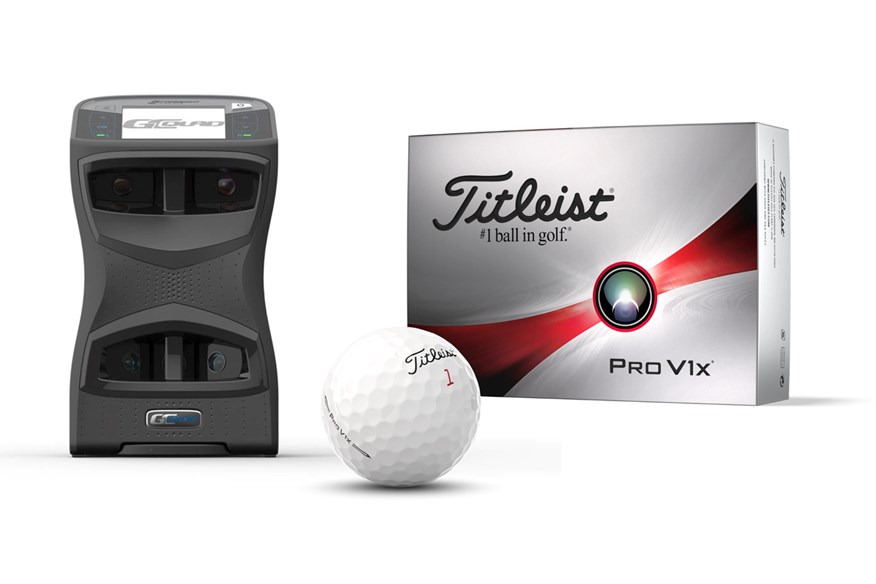
Why do we use a Titleist Pro V1x golf ball?
It would be easy to use just one test golf ball brand every year, but that inevitably leads to criticism for being too closely aligned to one manufacturer, especially if that brand’s equipment performs particularly well. To ensure fairness we like to switch manufacturers for the Top Gear test ball each year. For 2024 we’ve used the Titleist Pro V1x.
The brand revealed the latest Pro V1x model in 2023, and Titleist’s Senior Director of Golf Ball Research and Engineering, Mike Madson says “Consistency means when a golfer tees up a Pro V1 or Pro V1x, every properly executed shot they make is going to deliver the performance they expect and the performance they trust.”
Thanks to the Titleist Pro V1 and Pro V1x mopping up mountains of tour wins across all global tours we know the model is trusted by the world’s very best.
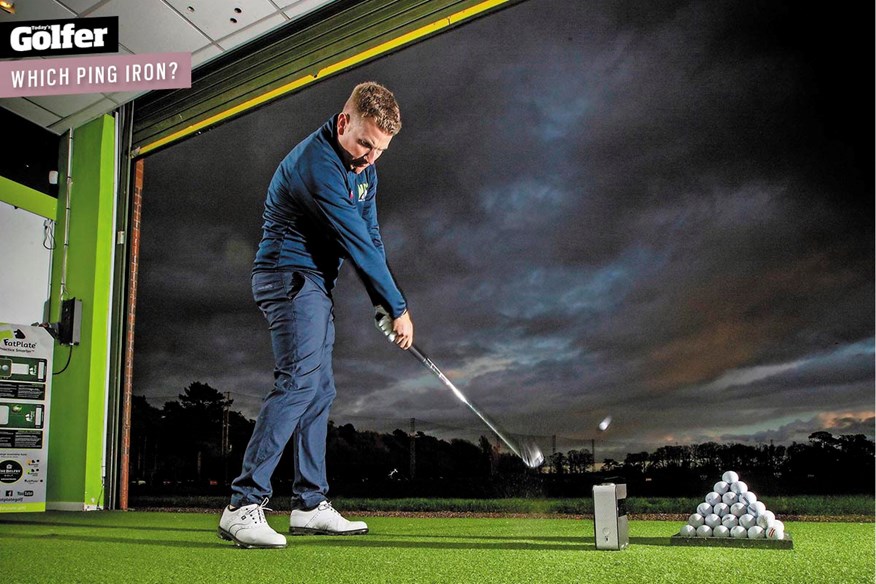
Why do we use a pro tester?
Speak to any golf club engineer about product testing and they all talk about needing a repeatable, reliable strike to offer any sort of valuable comparison. So, whilst we accept not all of the equipment included within our tests was designed for our test pro, what our data shows is a great comparison of how clubs in each particular category differ, which is hugely valuable in helping you narrow your choice as a consumer.
In 2024 we’ve tested 83 different 7-irons, during which our test pro missed a target green at 170 to 200 yards no more than a dozen times. He got a hole-in-one, lipped out, and hit the flag several times, he also loves hitting golf balls all day long. In short, Neil Wain is the perfect club tester due to his consistency in delivering accurate and reliable comparative data.
We would of course always recommend attending a proper fitting session, to ensure any purchase is tailored to your game.
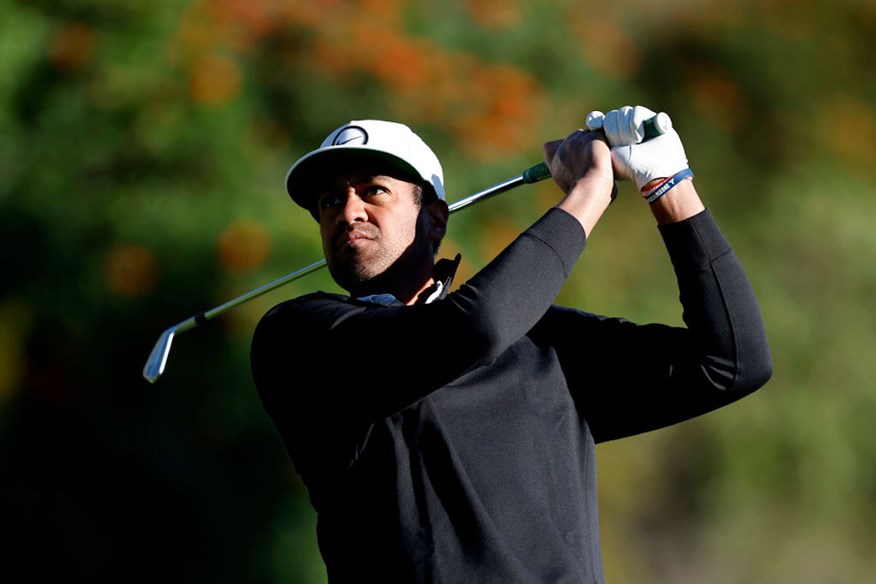
Buying advice & FAQs
Are Ping irons good for beginners?
Ping has always made very forgiving clubs that are well-suited to beginner golfers. The Ping G430, Ping G430 HL, and G730 are all irons that will suit beginners well and continue to be very playable even as they improve towards mid and even low handicaps.
Which tour pros use Ping?
A vast array of tour pros use Ping irons, including Cameron Champ, Stewart Cink, Corey Conners, Tony Finau, Tyrrell Hatton, Viktor Hovland, Joaquin Niemann, Louis Oosthuizen and Bubba Watson.
Which are the best Ping irons?
Whilst the best Ping irons will depend on the individual golfer, we feel the Ping G430 will be the best Ping iron for the widest range of golfers. The Ping i230 and Blueprint are excellent choices for good players.
Which Ping iron is the most forgiving?
The Ping G730 is the most forgiving Ping iron in the range.
What is the best Ping iron for high handicappers?
The Ping G430 and G730 will be the best Ping iron for high-handicappers, while the Ping G430 HL is a great option for slower swing-speed players.
Are the Ping G430 worth the money?
Obviously, any golf equipment purchase decision depends on your individual budget, especially as a set of irons can set you back £900+, but the Ping G430 offer fantastic performance and will continue to serve you well for years, even if you improve your golf during that time. Generally, Ping equipment also holds its value better than the competition.
If budget is an issue, look out for deals on the older G425 or G410 irons, just be aware you may not benefit from a custom fitting to ensure your irons are set up perfectly for you.
